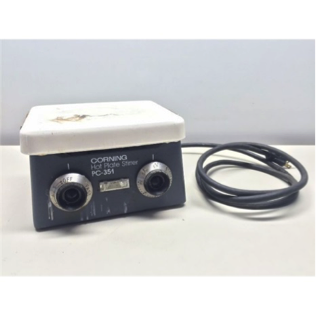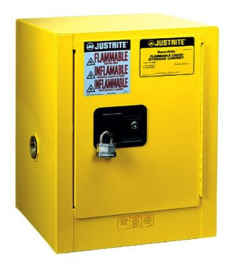A recent fire occurred on campus that caused substantial damage to a chemical fume hood. Many of the components of this important engineering control will have to be replaced. The cause of the fire is suspected to be due to a defect in the hot plate that was used. To continue our discussion on hot plate safety (see May 2015 Lab Rat), keep the following points in mind:
- Unplug hot plates when not in use. This not only reduces energy consumption, but reduces the chance of spontaneous heating events.
- Discontinue use of any hot plate that:
- Has malfunctioned
- Has a frayed cord
- Was purchased over 30 years ago
- When only stirring is required, use a stirrer instead of a hot plate/stirrer combo unit.
Hot plate relay heater switches can fail unexpectedly and cause spontaneous heating events. See Picture 1 for a model that has been reported to fail in this manner:

Picture 1: Corning PC-351 Hotplate/Stirrer Combo Unit
Another factor in this fire was improper storage of flammable materials. Flammable materials should be kept:
- away from sources of heat (e.g. hot plates, heat guns & lab ovens), and
- away from oxidizers (e.g. hydrogen peroxide & potassium permanganate)
- away from compressed air & solvent canisters (e.g. Dust-Off, aerosol cans)
- covered to prevent evaporation and formation of flammable vapors.
See Picture 2 and 3 for examples of appropriate storage locations for flammable materials.
Picture 2: Refrigerator/Freezer Designed for Flammable Materials Storage
Picture 3: Flammable Materials Storage Cabinet


Leave a Reply